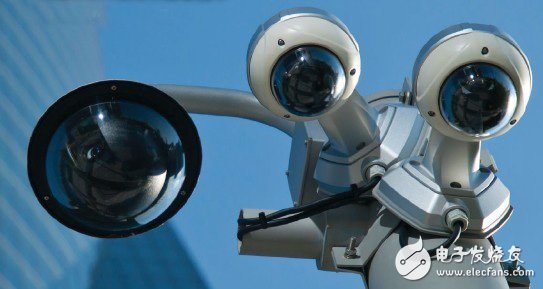In recent years, with the increasing demand from the user market for the in-depth application of the data resources of various security subsystems, how can we truly realize the synchronous operation, flexible invocation, real-time monitoring and unified management between security subsystems? The most important issue facing many security manufacturers. The advantages of embedded security monitoring are highlighted, helping intelligent security monitoring applications.
Embedded analysis helps intelligent security monitoring
As embedded analysis functions enter automotive vision, security and surveillance systems, industrial and factory automation, and a range of other consumer applications, we will come into contact with intelligent systems more frequently in the future. Now, high-performance, programmable low-power digital signal processors (DSPs) are laying the foundation for a new round of embedded analysis systems, enabling them to autonomously collect data, process it in real time, draw conclusions and take action. So, how does TI and its design network members provide advanced embedded analysis systems for security monitoring applications today.

Embedded analysis technology integrates embedded systems with human reason, enabling the system to analyze information and make informed decisions. Although embedded analysis technology is applicable to various industries, most embedded analysis applications share a series of technical characteristics, including:
Diversified algorithms: Embedded systems are developed on the basis of a large number of mathematical, statistical, signal and image processing technologies. It combines these technologies with machine learning, pattern recognition, and other types of algorithms. For applications, the combination of these algorithms tends to be unique, and often each algorithm needs to be adjusted slightly. This makes both programmable processors and highly flexible software that generally exists in the form of reusable software libraries very important;
Fast processing and predictable latency: Embedded analytics generates a large amount of computing load that must be processed in real time. In addition, the time allocated for processing must also be bounded and determined, otherwise the timing of the system will be turned off. Advanced architecture with parallelism can help in this regard;
High data throughput: In fact, all embedded processing applications involve some kind of extreme data throughput. Large amounts of data are input into the system from sensors, cameras, microphones, and other input devices. Data must be processed quickly, and these results, which usually involve large amounts of data, must also be output quickly. Embedded analysis systems require advanced solutions such as hierarchical memory architecture, advanced direct memory access (DMA) controllers, and wide memory interfaces to maintain high data throughput;
Low power consumption: Many embedded analysis applications are mobile systems or deeply embedded systems, which may or may not be able to connect to the power grid. Low power consumption is usually essential;
Low cost: IP security cameras, smart TVs, game consoles and many other systems that support embedded analysis are sensitive to cost, and various technical requirements need to be considered. The balance between the two is a challenge.
Electric Air Pump For Football,Electric Soccer Ball Pump,Soccer Ball Air Pump Needle,Football Pump With Gauge
SHENZHEN SMARTNEWO TECHNOLOGY CO,. LTD , https://www.newopump.com
